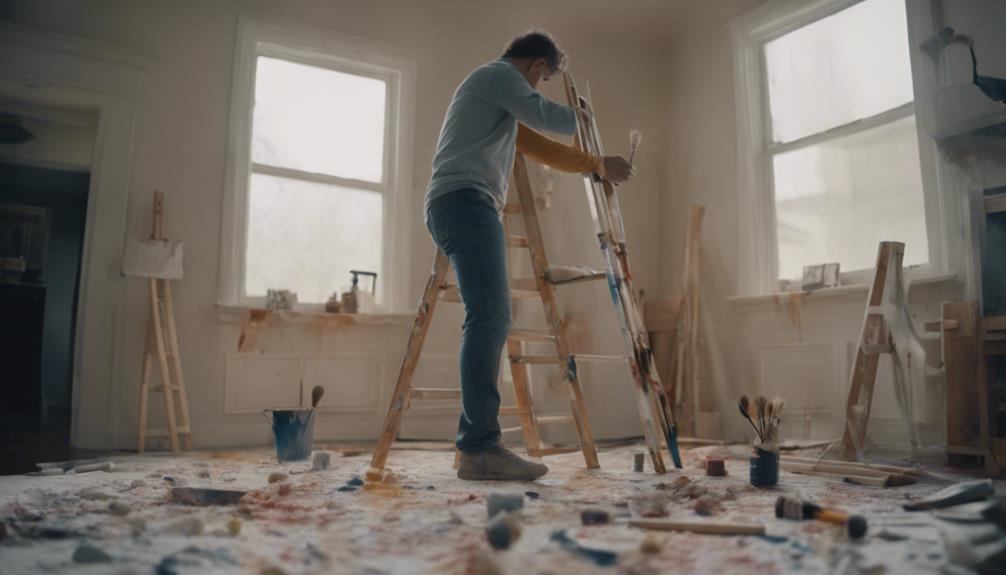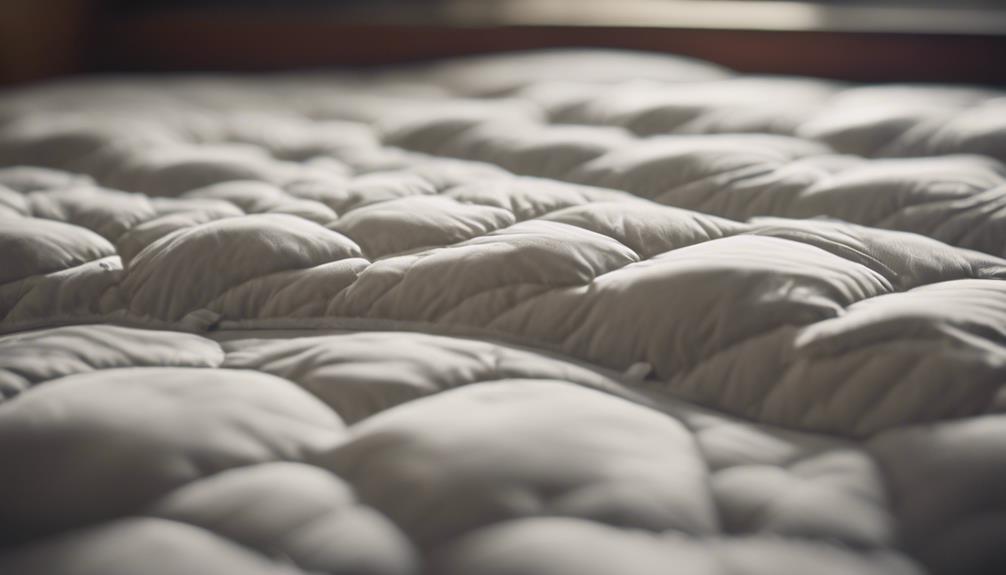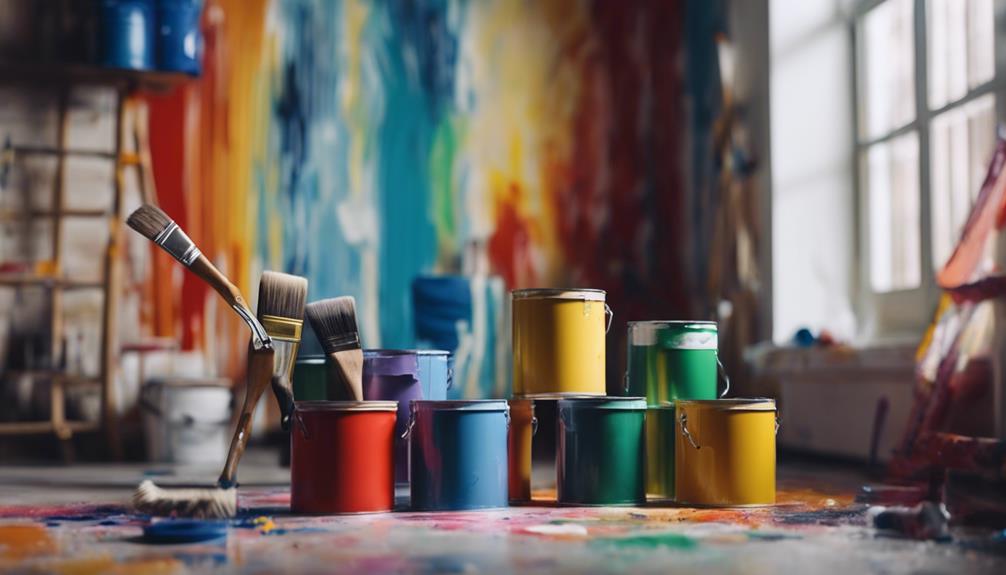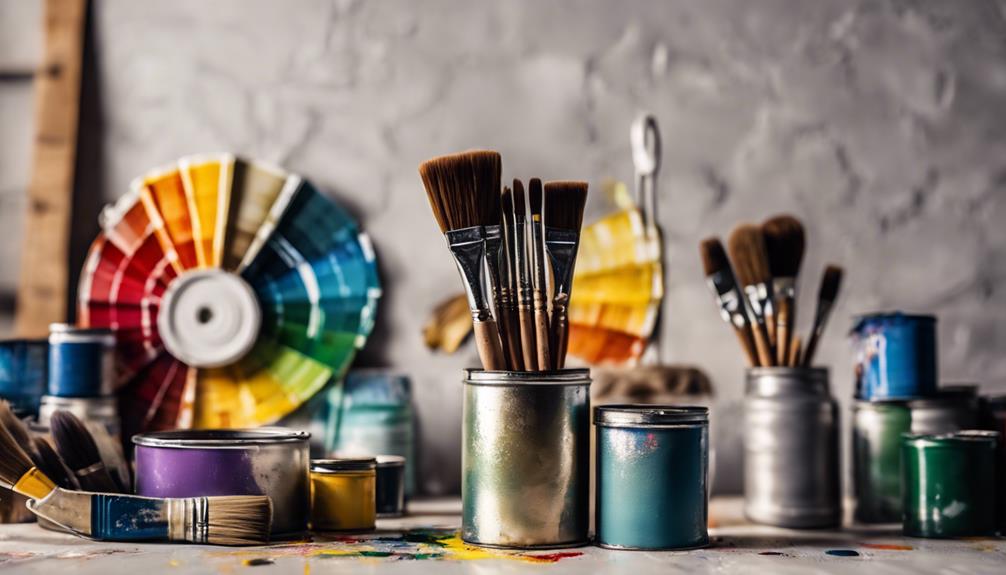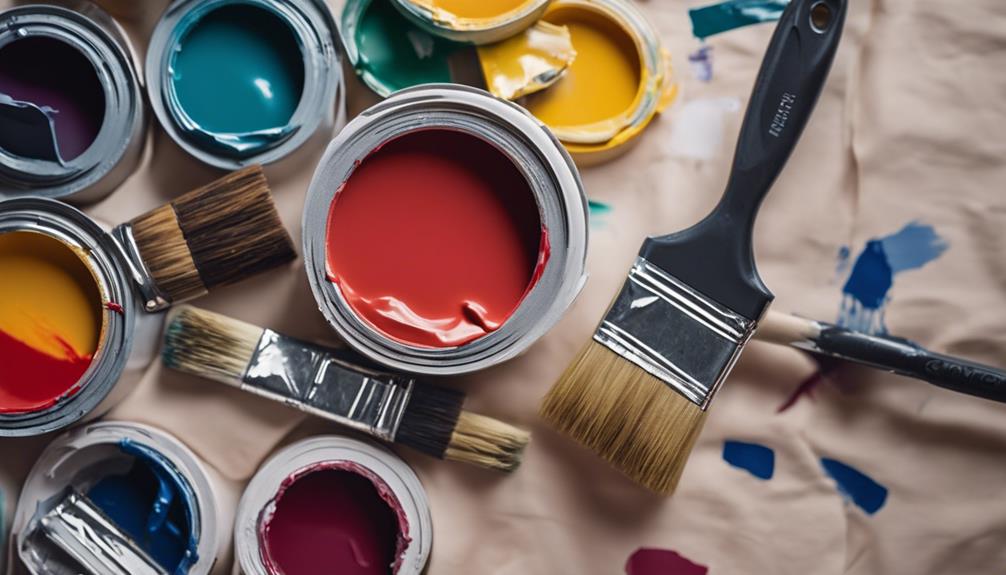Painting the interior of a house can be tough due to factors like wall prep, textures, and extra paint coats. But with good planning and right tools, it's manageable. Factors like intricate details or ceilings can add complexity. Ensuring walls are prepped, surfaces protected, and paint estimated is crucial. Necessary tools include rollers, brushes, and drop cloths. Tips like checking imperfections and starting with walls can help. Attention to detail is essential for a pro finish. With more details on planning, tools, and techniques, you can take your painting skills to the next level.
Key Takeaways
- Prepping walls and surfaces is crucial.
- Having the right tools simplifies the process.
- Proper planning ensures a smooth painting experience.
- Attention to detail guarantees a professional finish.
- Following steps and tips ensures a successful outcome.
Factors Affecting Painting Difficulty
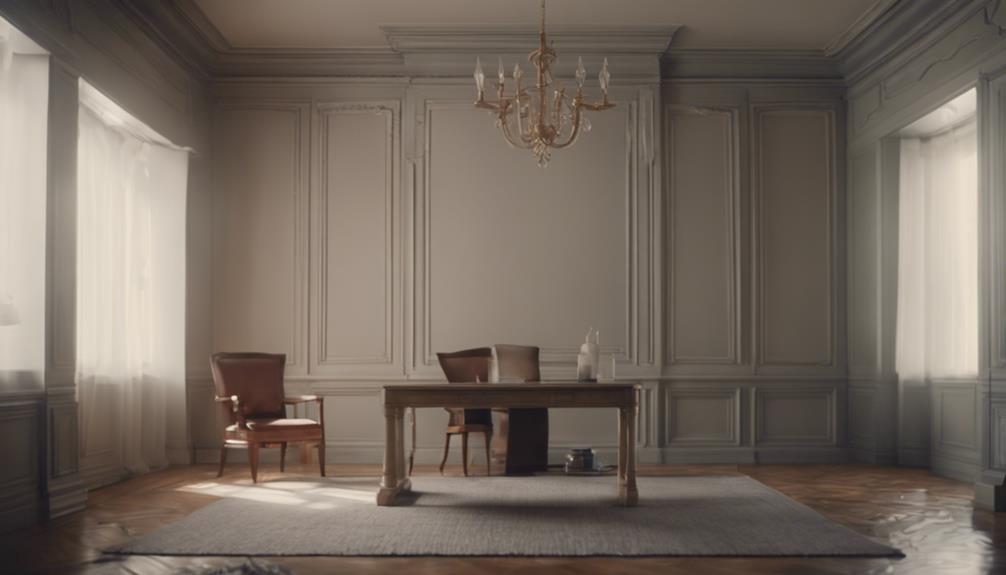
What factors make painting the interior of a house more challenging?
When it comes to painting a room, several aspects can increase the level of difficulty. One key factor is the need to prep the walls adequately. Repairing any imperfections, such as cracks or holes, before starting the paint job can be time-consuming and require attention to detail. Additionally, if the walls have a textured surface, it can make painting more challenging as it may require extra coats of paint to achieve a smooth finish.
Another factor that can add to the difficulty is painting the ceiling. This task often requires more effort and precision compared to painting walls, especially in rooms with intricate details or multiple corners and angles. Using painter's tape to protect areas where different surfaces meet can help in achieving clean lines but also adds to the overall amount of time needed for the project.
Importance of Proper Planning
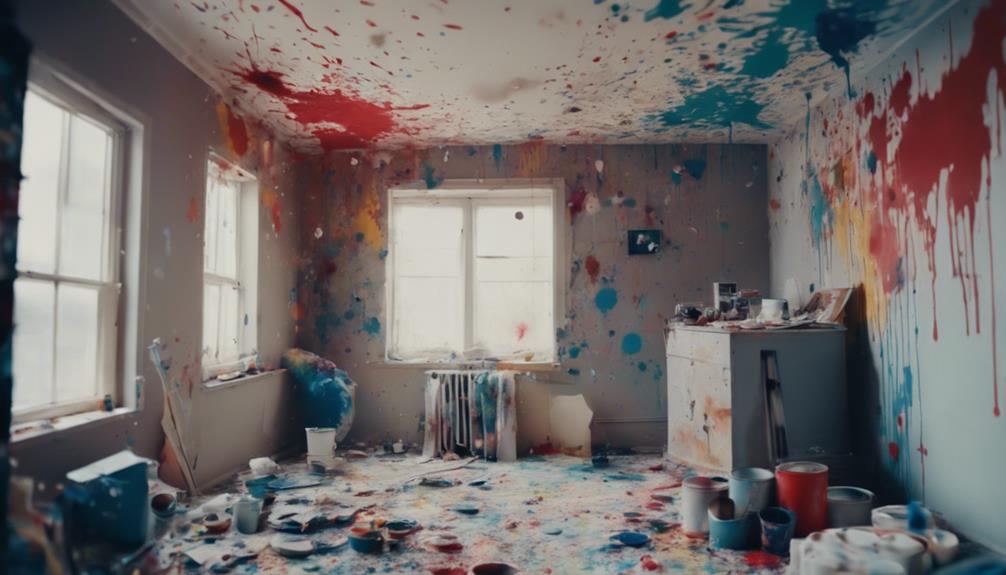
Proper planning plays an essential role in guaranteeing the success of an interior painting project by optimizing time and resources. When painting the interior of your home, taking the following steps to painting your room can make the process smoother:
- Prepping the Walls: Properly preparing the walls by cleaning, patching any holes or imperfections, and sanding where necessary ensures a smooth painting surface.
- Protecting Surfaces: Cover floors, furniture, and any areas not meant to be painted with drop cloths or painter's tape to prevent accidental splatters and spills.
- Estimating the Amount of Paint: Calculate the square footage of the walls to determine the right amount of paint needed, helping you avoid running out of paint midway.
- Ensuring Proper Ventilation: Adequate ventilation is essential during painting to dissipate fumes and aid in the drying process.
Necessary Tools for Painting
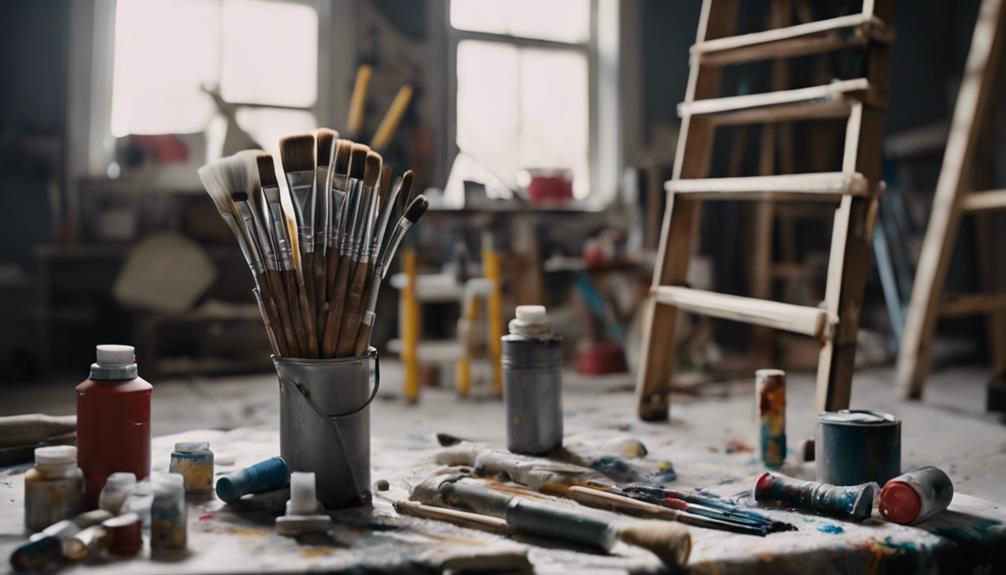
When painting the interior of a house, making sure you have the necessary tools is vital to a successful project. Essential tools include paint rollers, brushes, drop cloths, painters tape, sandpaper, and a paint tray. Having extension poles can make reaching high areas easier.
Proper preparation with the right tools is essential for a smooth painting experience. Use a paint calculator to determine the amount of paint needed based on room size, changes, primers, and surface textures. Gather all supplies before starting to streamline the process and prevent interruptions.
Be sure to have enough paint for the entire room, including when painting the trim, door and window casings, and walls. Remember to mix the paint well before starting. Lay down a drop cloth to protect floors and ensure a clean workspace. Having these tools ready will help you tackle the project efficiently.
Tips for Smooth Painting Process
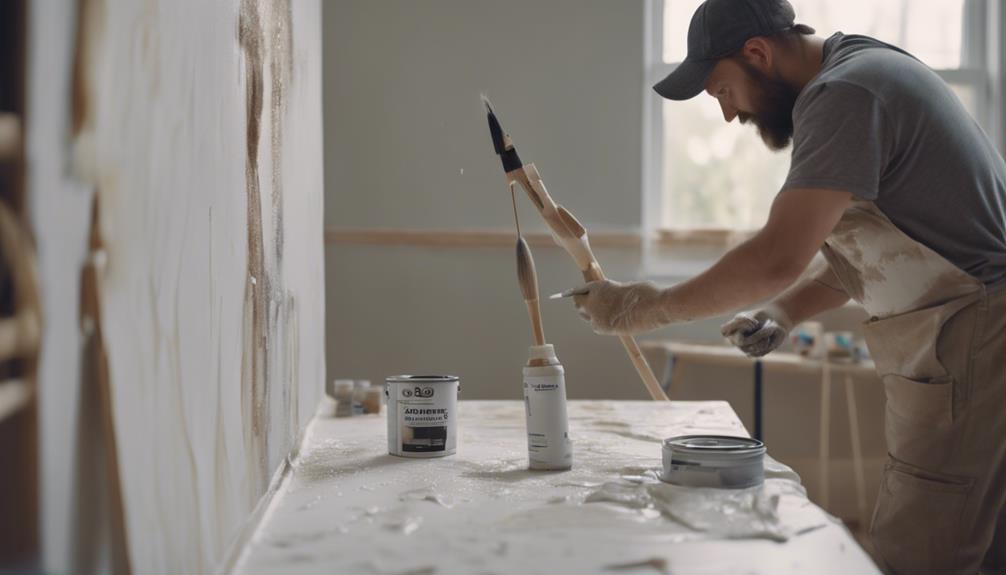
To guarantee a smooth painting process, begin by thoroughly preparing the walls for a flawless finish. Here's a quick guide to painting your house:
- Make sure to check for imperfections: Inspect the walls for cracks, holes, or any damage that needs repair before starting.
- Determine how much paint you need: Measure the walls' square footage to calculate the amount of paint required for an even coat.
- Paint the walls first: It's a good idea to start with the walls before moving on to the trims for a neater finish.
- Keep in mind to watch out for roller marks: Avoid leaving streaks by rolling the paint in a 'W' shape and blending each section while it's wet.
Benefits of Attention to Detail
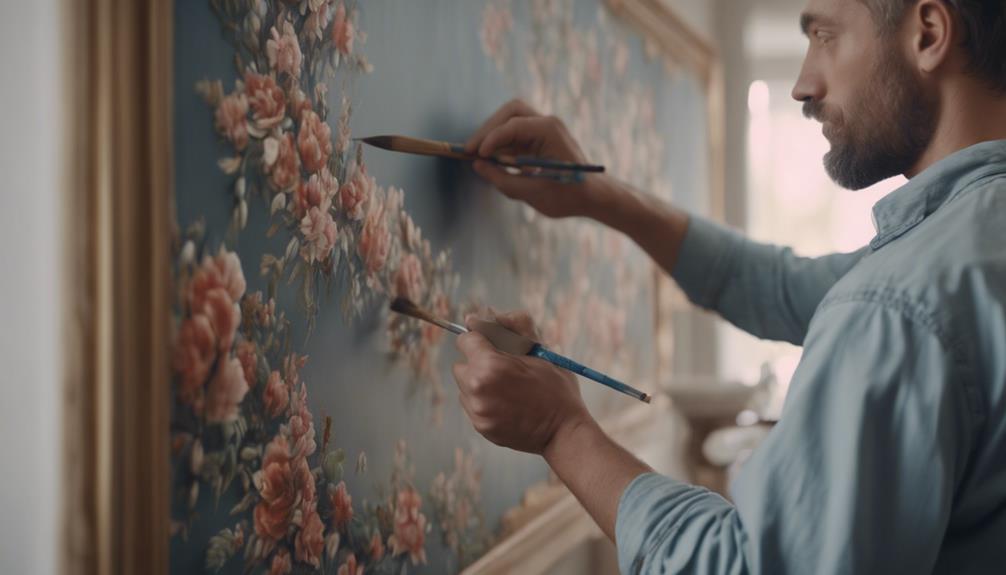
For a professional-looking finish that elevates your home's aesthetics, meticulous attention to detail in painting is essential. Paying close attention to every aspect of your painting project, from the walls or ceilings to the floors and furniture, can make a significant difference in how the final result turns out.
Ensuring that the entire wall is properly prepped, cleaned, and primed before applying paint will make it look flawless and smooth. Precision is vital when painting edges, corners, and trim to achieve a polished look throughout the room.
Finishing touches such as touch-ups and thorough clean-up can enhance the overall appearance and longevity of the paint job. By focusing on these details and maintaining a high level of attention to detail, you can create a visually appealing space that exudes professionalism and style.
Frequently Asked Questions
Is It Worth It to Paint Your Own House Interior?
Painting your own house interior is definitely worth it if you're up for the challenge. It can save you a significant amount of money compared to hiring a professional.
While it requires time and precision, the satisfaction of completing the project yourself and the cost savings make it a rewarding endeavor. Just make sure to familiarize yourself with proper techniques and tools to guarantee a successful outcome.
Can I Paint the Inside of My Own House?
You can definitely paint the inside of your own house! It's a manageable DIY project if you prepare well. Check for imperfections, ready your walls, and pick the right materials.
Use a step-by-step guide, starting small and using proper tools. DIY saves about $1300 compared to hiring a pro for a 900 sq ft house.
With patience and precision, painting your interior can be rewarding and cost-effective. Enjoy the process!
How Hard Is It to Paint Your Own House?
Painting your own house can be challenging due to the preparation needed like filling holes, sanding, and cleaning walls. The difficulty varies based on wall condition, project size, and your experience. Applying primer correctly, choosing the right paint, and using essential tools are vital.
Attention to detail, patience, and precision are key for a pro finish. Though tough, many successfully DIY to save costs and enjoy the accomplishment.
Is It Hard to Paint Your Own Walls?
Painting your own walls can seem intimidating at first, but with the right tools and techniques, it can be manageable. Preparation like repairing walls and selecting the appropriate paint type is essential.
Skill and patience are key for achieving a professional finish. Remember, take your time, pay attention to details, and don't rush the process.
With practice and a steady hand, you'll soon be painting like a pro!
Conclusion
To sum up, painting the interior of a house can be challenging but with proper planning, the right tools, and attention to detail, it can be a smooth process.
Are you ready to transform your living space with a fresh coat of paint?
Remember to take your time, follow the tips provided, and enjoy the benefits of a beautifully painted home.
